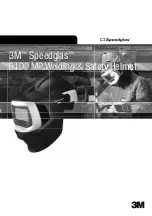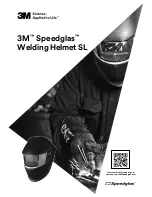
SAFETY INFORMATION
2-2
2
Many accidents involve inexperi-
enced operators.
• Make sure that you are qualified
and that you only lend your mo-
torcycle to other qualified oper-
ators.
• Know your skills and limits.
Staying within your limits may
help you to avoid an accident.
• We recommend that you prac-
tice riding your motorcycle until
you have become thoroughly
familiar with the motorcycle and
all of its controls.
Many accidents have been
caused by error of the motorcycle
operator. A typical error made by
the operator is veering wide on a
turn due to excessive speed or un-
dercornering (insufficient lean an-
gle for the speed). Never travel
faster than warranted by condi-
tions.
Ride cautiously in unfamiliar ar-
eas. You may encounter hidden
obstacles that could cause an ac-
cident.
The posture of the operator is im-
portant for proper control. The op-
erator should keep both hands on
the handlebar and both feet on the
operator footrests during opera-
tion to maintain control of the mo-
torcycle.
Never ride under the influence of
alcohol or other drugs.
Be sure the transmission is in neu-
tral before starting the engine.
Protective Apparel
The majority of fatalities from motorcy-
cle accidents are the result of head in-
juries. The use of a safety helmet is the
single most critical factor in the pre-
vention or reduction of head injuries.
Always wear an approved helmet.
Wear a face shield or goggles.
Wind in your unprotected eyes
could contribute to an impairment
of vision that could delay seeing a
hazard.
The use of a jacket, heavy boots,
trousers, gloves, etc., is effective
in preventing or reducing abra-
sions or lacerations.
Never wear loose-fitting clothes,
otherwise they could catch on the
control levers, footrests, or wheels
and cause injury or an accident.
Always wear protective clothing
that covers your legs, ankles, and
feet. The engine or exhaust sys-
tem become very hot during or af-
ter operation and can cause
burns.
Avoi
d
Car
b
on Monoxi
d
e Poisonin
g
All engine exhaust contains carbon
monoxide, a deadly gas. Breathing
carbon monoxide can cause head-
aches, dizziness, drowsiness, nausea,
confusion, and eventually death.
Carbon Monoxide is a colorless, odor-
less, tasteless gas which may be pres-
ent even if you do not see or smell any
engine exhaust. Deadly levels of car-
bon monoxide can collect rapidly and
you can quickly be overcome and un-
able to save yourself. Also, deadly lev-
els of carbon monoxide can linger for
hours or days in enclosed or poorly
ventilated areas. If you experience any
symptoms of carbon monoxide poi-
U1SN83E0.book Page 2 Monday, September 8, 2014 2:36 PM
















































